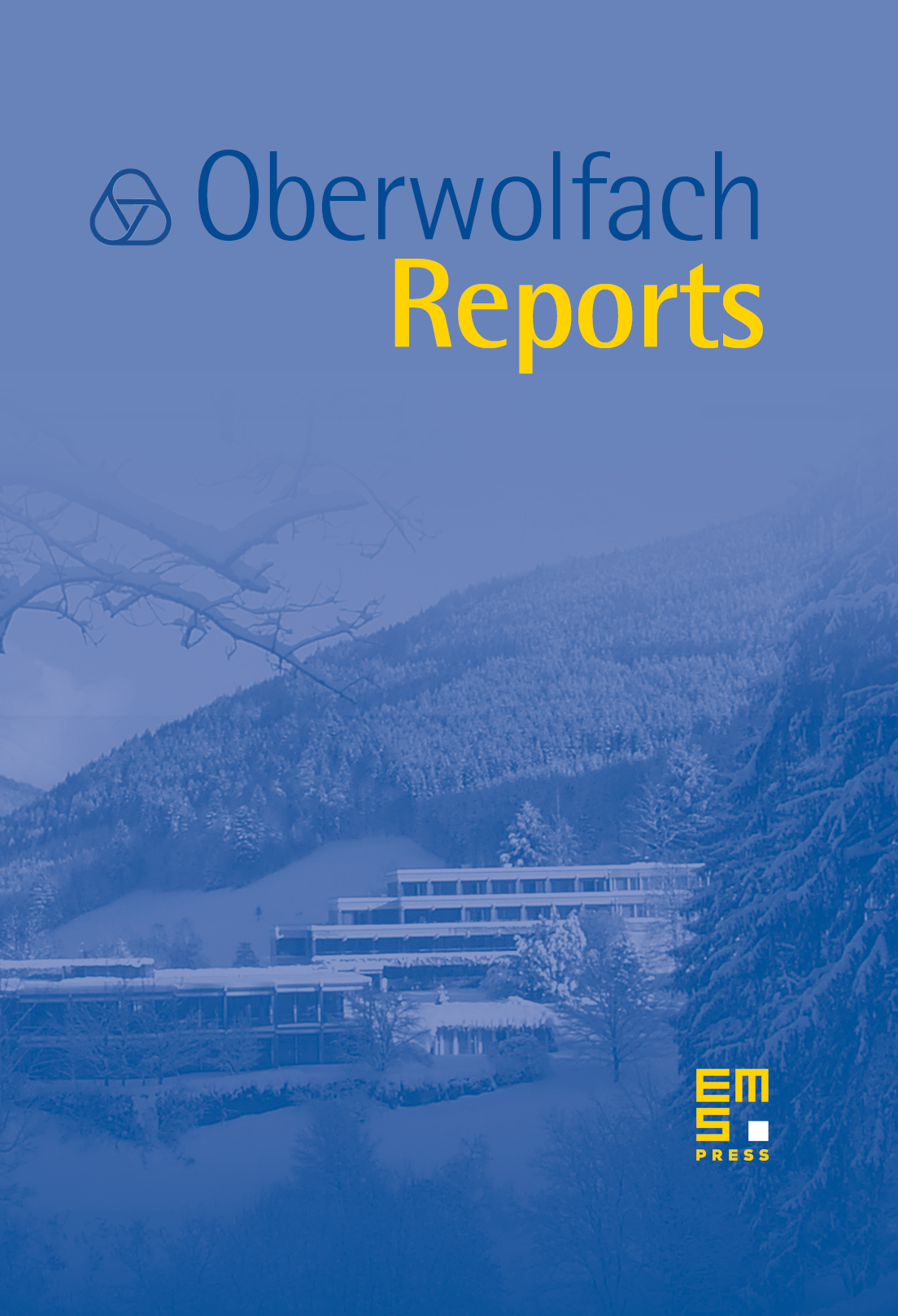Model Theory and Complex Analytic Geometry
Andreas Baudisch
Humboldt-Universität zu Berlin, GermanyDavid Marker
University of Illinois at Chicago, USAKatrin Tent
Universität Würzburg, GermanyFrank Wagner
Université Lyon 1, Villeurbanne, France

Abstract
The workshop consisted of 2 tutorials of four 1-hours talks each, 10 1-hours talks, and 5 half-hour talks. The tutorials were given by Ya'acov Peterzil and Sergei Strachenko onComplex analytic geometry, an o-minimal viewpoint, and by Boris Zil'ber and Alex Wilkie on Pseudoanalytic structures and Hrushovski's construction.
For many years there were two main lines of research in model theory:
- the abstract study of mathematical structures and theories, this line of the subject is often referred to as stability theory or classification theory;
- applications to the study of definability in concrete mathematical structures (like algebraically closed fields, the real field or the field of p-adic numbers).
At first, only the most basic tools from the general theory were needed in applications, but, over the last ten years, some of the most sophisticated ideas from stability theory have played an important role in applications, most notably Hrushovski's proof of the Mordell–Lang Conjecture for function fields. At the same time, these applications have given us new examples of stable structures which have led to new insights in the general theory. We shall briefly describe some of the recent work.
Compact Complex Spaces. Zil'ber showed that a compact complex space equipp\-ed with all analytic relations is an -stable structure with quantifier elimination. He and Hrushovski showed that any strongly minimal set definable in these structures is either locally modular or closely related to the field of complex numbers. This type of dichotomy is the fundamental insight in many of the modern applications of model theory. Pillay began the systematic model theoretic study of these structures and was able to show that many interesting model theoretic phenomena arise naturally in this context. For example, simple non-algebraic tori are exactly the locally modular groups. In addition to giving us new examples of locally modular strongly minimal sets, this result led Pillay to a model theoretic methods to extend Falting's theorem to a proof of Mordell–Lang Conjecture for complex tori. Pillay, in collaboration with Scanlon and Kowalski, have carried on a detailed model theoretic analysis of the groups definable in compact complex spaces, their results extend and generalize Fujiki's work on meromorphic groups. A highlight of this work is Pillay and Scanlon's proof that any meromorphic group is an extension of a complex torus by a linear algebraic group, a generalization of Chevalley's theorem for algebraic groups. Recently Pillay was able to show how results of Campana and Fujiki on cycle spaces leads to a relatively easy proof of the dichotomy theorem for strongly minimal sets. With this as a model he and Ziegler were able to find new proofs of the dichotomy theorem in several other important settings (differential fields, difference fields of characteristic 0) that greatly simplify and offer new insights to some applications of model theory to diophantine geometry. In model theory one often needs to not only understand the structures we are studying but also their nonstandard extensions. While these extensions have no classical analogs, problems about nonstandard extensions often give rise to interesting classical problems about uniformity. An important recent result in this direction is Moosa's proof of the nonstandard Riemann Existence Theorem.
Quasi-analytic structures. Zil'ber originally conjectured that the dichotomy property was true for all strongly minimal sets. Hrushovski refuted this by giving a very combinatorial construction of a counterexample. Zil'ber's current research program is designed to show that the type of examples constructed by Hrushovski actually arise naturally. The first major success of this program was recently completed by Koiran, building on work of Wilkie, who showed that one could construct analytic functions such that the structure is isomorphic to an expansion built by a Hrushovski construction. The most intriguing part of this program is Zil'ber's work on pseudoexponentiation. Zil'ber has shown that a Hrushovski style construction can be used to expand the complex field by adding an homomorphism from the additive to multiplicative group with very good model theoretic properties. The proof uses a wide array of ingredients including some diophantine geometry of intersections of varieties in algebraic tori developed by Zil'ber and Shelah's very abstract work on the classification theory of excellent classes. The most remarkable part of this program is Zil'ber's conjecture that the structure he has built is actually the complex field with the usual exponential function. An outright proof of this is unlikely, as it would require strong forms of Schanuel's conjecture, but, if true, this would give us a much better understanding of the model theory of this structure. For example, one could prove that any subset of definable using exponentiation is either countable or co-countable, and show that there are many automorphism. These are two difficult open problems.
A related question is whether one can obtain model theoretically interesting new structures on the complex numbers by adding sets defined in tame expansions of the real field. Marker showed that it was impossible to add any new real algebraic structure and Peterzil and Starchenko recently generalized this to show that one cannot add any o-minimal structure. It is still interesting to ask of o-minimal structures have any interesting -stable reducts.
In a slightly different direction, Miller and Speissegger have shown that the logarithmic spiral is d-minimal and Zil'ber believes this can be used to obtain some natural models of the theory of bi-colored field first built by Poizat using a Hrushovski construction.
Cite this article
Andreas Baudisch, David Marker, Katrin Tent, Frank Wagner, Model Theory and Complex Analytic Geometry. Oberwolfach Rep. 1 (2004), no. 3, pp. 1845–1882
DOI 10.4171/OWR/2004/35